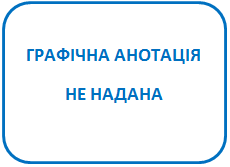Розробка методики управління силами та засобами зв’язку з використанням методів ресурсної оптимізації в операціях військ (сил)
DOI:
https://doi.org/10.15587/2706-5448.2022.267263Ключові слова:
сили та засоби зв’язку, радіоелектронна обстановка, угруповання військ (сил), оперативне управлінняАнотація
Найбільш характерними особливостями побудови систем зв’язку угруповань військ (сил) в ході ведення бойових дій (операцій) є високий ступінь апріорної невизначеності стосовно оперативної обстановки та малий обсяг вихідних даних для планування зв’язку. У таких умовах важливий правильний вибір апарату оцінки прийнятих управлінських рішень, який дозволить посадовим особам органів (пунктів) управління системою зв’язку угруповань військ (сил) бути впевненим у рішеннях, що приймаються. Саме тому питання підвищення ефективності управління силами та засобами зв’язку угруповань військ (сил) в ході ведення операцій є важливим та актуальним питанням. Об’єктом дослідження є система зв’язку угруповання військ (сил). Предметом дослідження є ефективність функціонування системи зв’язку угруповання військ (сил) відповідно до мети операції. В дослідженні проведено розробку методики управління силами та засобами зв’язку з використанням методів ресурсної оптимізації в операціях військ (сил). Новизна запропонованої методики полягає у врахуванні типу невизначеності щодо оперативної обстановки в операційному просторі. А також врахування чисельності складу угруповання (споживачів послуг зв’язку) угруповань військ (сил) в операціях. Також новизна розробленої методики полягає в врахуванні при плануванні заходів з розподілу та застосування сил та засобів зв’язку тривалості ведення операції (ведення бойових дій) та розрахунку трудовитрат, необхідних для забезпечення потреб в послугах зв’язку угруповань військ (сил). Зазначену методику пропонується реалізувати:
– у планувальних документах під час здійснення планування розгортання та експлуатації сил та засобів зв’язку;
– у програмному забезпеченні, під час здійснення оперативного управління системою зв’язку угруповань військ.
Посилання
- Shishatckii, A. V., Bashkirov, O. M., Kostina, O. M. (2015). Rozvitok іntegrovanikh sistem zv’iazku ta peredachі danikh dlia potreb Zbroinikh Sil. Ozbroennia ta vіiskova tekhnіka, 1 (5), 35–40.
- Timchuk, S. (2017). Methods of Complex Data Processing from Technical Means of Monitoring. Path of Science, 3 (3), 4.1–4.9. doi: http://doi.org/10.22178/pos.20-4
- Shevchenko, D. G. (2020). The set of indicators of the cyber security system in information and telecommunication networks of the armed forces of Ukraine. Suchasnі іnformatcіinі tekhnologіi u sferі bezpeki ta oboroni, 38 (2), 57‒62. doi: https://doi.org/10.33099/2311-7249/2020-38-2-57-62
- Zuiev, P., Zhyvotovskyi, R., Zvieriev, O., Hatsenko, S., Kuprii, V., Nakonechnyi, O. (2020). Development of complex methodology of processing heterogeneous data in intelligent decision support systems. Eastern-European Journal of Enterprise Technologies, 4 (9 (106)), 14‒23. doi: http://doi.org/10.15587/1729-4061.2020.208554
- Brownlee, J. (2011). Clever algorithms: nature-inspired programming recipes. LuLu, 441.
- Gorokhovatsky, V., Stiahlyk, N., Tsarevska, V. (2021). Combination method of accelerated metric data search in image classification problems. Advanced Information Systems, 5 (3), 5–12. doi: http://doi.org/10.20998/2522-9052.2021.3.01
- Meleshko, Y., Drieiev, O., Drieieva, H. (2020). Method of identification bot profiles based on neural networks in recommendation systems. Advanced Information Systems, 4 (2), 24–28. doi: https://doi.org/10.20998/2522-9052.2020.2.05
- Sliusar, V. I., Zinchenko, A. O., Zinchenko, K. A. (2015). The GSM standard mobile telecommunication system for airspace radar control needs. Suchasni informatsiini tekhnolohii u sferi bezpeky ta oborony, 2 (23), 108–114.
- Sliusar, I. I., Sliusar, V. I., Smoliar, V. H., Omarov, M. I., Khomenko, R. V. (2016). Shliakhy udoskonalennia system trankinhovoho zv’iazku Ukrainy. Novitni informatsiini systemy ta tekhnolohii, 5, 36–47.
- Jalil Piran, M., Pham, Q.-V., Islam, S. M. R., Cho, S., Bae, B., Suh, D. Y., Han, Z. (2020). Multimedia communication over cognitive radio networks from QoS/QoE perspective: A comprehensive survey. Journal of Network and Computer Applications, 172, 102759. doi: https://doi.org/10.1016/j.jnca.2020.102759
- Khan, M. W., Zeeshan, M. (2019). QoS-based dynamic channel selection algorithm for cognitive radio based smart grid communication network. Ad Hoc Networks, 87, 61–75. doi: https://doi.org/10.1016/j.adhoc.2018.11.007
- Majumder, T., Mishra, R. K., Singh, S. S., Sahu, P. K. (2020). Robust congestion control in cognitive radio network using event-triggered sliding mode based on reaching laws. Journal of the Franklin Institute, 357 (11), 7399–7422. doi: https://doi.org/10.1016/j.jfranklin.2020.05.019
- Lin, Y.-C., Shih, Z.-S. (2018). Design and simulation of a radio spectrum monitoring system with a software-defined network. Computers & Electrical Engineering, 68, 271–285. doi: https://doi.org/10.1016/j.compeleceng.2018.03.043
- Rharras, A. E., Saber, M., Chehri, A., Saadane, R., Hakem, N., Jeon, G. (2020). Optimization of Spectrum Utilization Parameters in Cognitive Radio Using Genetic Algorithm. Procedia Computer Science, 176, 2466–2475. doi: https://doi.org/10.1016/j.procs.2020.09.328

##submission.downloads##
Опубліковано
Як цитувати
Номер
Розділ
Ліцензія
Авторське право (c) 2022 Andrii Shyshatskyi, Iaroslava Levchenko, Oleksandr Trotsko, Vira Velychko, Nadiia Protas, Oleh Shknai, Hennadii Miahkykh, Dmytro Balan, Serhii Pyvovarchuk, Oleksandr Shemendiuk

Ця робота ліцензується відповідно до Creative Commons Attribution 4.0 International License.
Закріплення та умови передачі авторських прав (ідентифікація авторства) здійснюється у Ліцензійному договорі. Зокрема, автори залишають за собою право на авторство свого рукопису та передають журналу право першої публікації цієї роботи на умовах ліцензії Creative Commons CC BY. При цьому вони мають право укладати самостійно додаткові угоди, що стосуються неексклюзивного поширення роботи у тому вигляді, в якому вона була опублікована цим журналом, але за умови збереження посилання на першу публікацію статті в цьому журналі.








